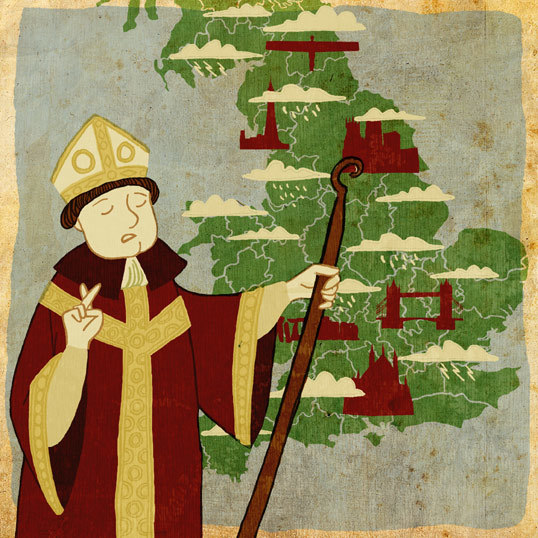The UK looks likely to avoid a curse of prolonged rainfall foretold in British legend, despite a soggy start for much of the country.
The myth of St Swithin’s Day states if it rains on July 15, wet weather will persist for 40 days and 40 nights.
While showers are expected in south and central England early today and periods of sunshine and showers will hover across northern parts of Scotland later on, the weather is an “improving picture” according to forecaster MeteoGroup.
Many regions should escape the prophecy, with dry weather and sunny spells forecast in Wales, the South West, Midlands, and much of Northern England.
Claire Austin of MeteoGroup said: “Certainly central and southern areas of England and Wales will get a damp start with patchy light rain but there is no heavy rain around and it is an improving picture throughout the day.
“Temperatures are not too bad either, with highs of 20C to 23C in southern parts of the UK and a maximum of 18C in Scotland.”
The earliest reference to the St Swithin’s Day legend dates back to the 14th century.
St Swithin was an Anglo-Saxon bishop of Winchester, who died in AD862. When he was made a saint in 971, his body was dug up and moved to an indoor shrine in the city’s cathedral.
Some writers claimed this outraged the heavens, causing rain to pour on the church and continue uninterrupted for 40 days.
But the Met Office said there had not been a record of 40 dry or 40 wet days following St Swithin’s Day since records began in 1861.
Dan Williams of the Met Office said: “People should not fear the St Swithin’s legend. There is no observational evidence whatsoever to suggest that this legend holds any water.”
The forecast for July and August also looks set to defy the myth.
The Met Office is predicting settled weather across the UK towards the end of July, with occasional spells of rain and showers possible at times.
Plenty of fine and dry weather is also expected in the first half of August, with a risk of occasional, short-lived spells of wetter weather.

